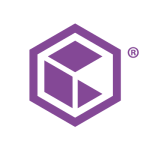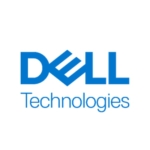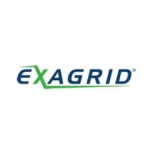
Cohesity Data Cloud Room for Improvement
Regarding the downsides of Cohesity Data Cloud, they need to improve the cost and support, as we need more assistance. Sometimes the support team does not provide proper assistance during critical issues from the cloud end.
We occasionally experience connection issues from the cloud end, including reset by peer errors. Additionally, the web console experiences connectivity issues. The major issues I have observed are primarily from the cloud end.
View full review »ME
Mounir ElMously
Senior Manager Advisory Services at Optimum Online (Cablevision Systems)
Cohesity Data Cloud is not unique in this area. There are a couple of other vendors who are playing in the same area. They provide some sort of isolation for the protected data that makes it very difficult, almost impossible to tamper with once it is stored on the platform. One of the major issues of ransomware attacks is that they happen in the background and it is too late after being hit. Giving a hard time for bad actors to access the data provides more immunity for your data from ransomware attacks.
All organizations are very interested in as-a-service model where they do not pay upfront costs, but only get the services and pay for what they use. Converting from CapEx to OpEx is the ultimate goal for any financial manager in any organization. The model uses some sort of object storage for the backup data and contents, which gives a better level of safety than the traditional file system because normally the object storage is not subject to alteration.
The only concern I have with cloud implementation is that if you have a presence on-premises, trying to use the cloud may become a performance challenge. It is a perfect situation for workloads that live in the cloud. The way I design things is we should not send data across the WAN to the cloud if it is a large volume that could potentially affect performance. A cloud solution is ideal for a cloud workload from Cohesity Data Cloud perspective. It is best to have some sort of local presence of a repository to do the backup using LAN performance. Then we can always send or upload the data to the cloud without impacting the actual backup window.
Support for additional platforms and the option to do multi-tier performance would be beneficial. For example, if I have three types of workloads - SAP database, Oracle database, and SQL database - each with different backup window requirements, the ability to tier performance to meet these specific needs would be perfect for the actual workload and meeting the availability requirements of each application domain.
The general perception is if it is not broken, do not fix it. In most cases, organizations do not see value for security until they are hit with something bad. With ever-increasing threats and risks of ransomware and data theft, the problem is becoming more obvious. Looking at what is happening in the market and seeing organizations being hit by security threats, the level of loss of services and client dissatisfaction makes security investment worthwhile. There is no real tangible ROI for security, but considering the potential of losing data forever or having it exposed unnecessarily to the market, it is worth the investment. The bad actors and risks are always reinventing themselves, so we must reinvent our security posture.
View full review »MR
Mysura Reddy
Sr. Engineer at a retailer with 501-1,000 employees
The downside of Cohesity Data Cloud is that it is not supporting a legacy environment. If you compare it to Commvault, Commvault supports the entire legacy environment. We have still 2000 and 2003 servers, Windows, and old legacy Oracle servers, and old AX machines. There is also a Skytap environment, a third-party cloud supported by Commvault, but not with Cohesity. Initially, we thought of taking the Cohesity tool only, but unfortunately, the management decided to go with Commvault.
There should be some enhancements with the cloud platforms and integration with the cloud. I feel some dissatisfaction with integrating with the cloud, such as Azure and AWS. When I tried with the Cohesity tool initially, I didn't have much feasibility to work on it.
For stability, since we have been using Cohesity Data Cloud for only three months, the server went down once. But I don't complain about the tool because of Cohesity. I couldn't find anything negative about Cohesity Data Cloud specifically. The downtime was due to server patches on the OS side.
Cohesity Data Cloud does require maintenance on my end. One more thing is that Cohesity has to develop more on vulnerabilities. Maintenance releases should come as soon as possible. Issues such as ransomware protection and fixing vulnerabilities should be prioritized.
View full review »Buyer's Guide
Cohesity Data Cloud
November 2025
Learn what your peers think about Cohesity Data Cloud. Get advice and tips from experienced pros sharing their opinions. Updated: November 2025.
872,922 professionals have used our research since 2012.
Automated tiering in Cohesity Data Cloud is something I have not extensively worked with. It involves lifecycle policies where local backups go to the hot tier, then to the cool tier, and then to archive. While I have used this feature with another platform, we have not utilized this capability provided by Cohesity.
Cohesity Data Cloud scans backups by default for ransomware and malware, sending notifications if there are any security concerns or compromised systems. This is beneficial if you do not have a paid subscribed endpoint solution such as CrowdStrike.
The AI chatbot in Cohesity Data Cloud could be more useful for backup failures. When there is a critical error or warning on the dashboard, it would be beneficial if Cohesity could provide analysis assistance. For instance, identifying latency issues that might be slowing down backups and breaching SLAs. Having insights or a helping assistant for health status would be valuable, showing patterns over specific time periods and identifying changes in bandwidth or backup interruptions.
Currently, there are limitations to what a backup engineer can do independently. More autonomy in maneuvering through logs and troubleshooting would be beneficial. While the diagnostics have numerous attributes, they are not easily accessible or user-friendly for engineers who handle multiple responsibilities beyond backup management.
View full review »JT
Jochen Tytgat
Owner at hq-12b
They still have quite some way to go for improving their agents. As we have many snapshots which are agentless, we know that for recovery, for instance, if you want to do file recovery, an agent is normally not really required, but it's the best approach. This agent is not always stable. We also notice some difference between versions. In a previous version, certain features were possible, and in a newer version, they're not possible anymore.
Regarding physical server backup, they can improve. In the current world, most things are virtualized, but the physical servers are not to be left alone, so that's something they can improve as well.
View full review »The pricing of the Cloud is on the higher side, and it should be cost-effective enough to compete with native solutions.
Currently, Cohesity Cloud seems very costly compared to native backups. Although this is an emerging tool and there is room for growth, it needs to mature further. There is an AI feature, however, it is still in the development phase and requires substantial improvements.
View full review »SM
Stefan-Motsch
Evangelist / CTO at fgnext
The primary drawback is the need to transfer large amounts of data to the cloud via an internet connection, requiring significant bandwidth. Reading data from the cloud can incur additional costs, and mass data restores might take time, affecting recovery objectives. It is essential to throttle data transfer to avoid consuming too much bandwidth, which might affect operational performance.
View full review »In terms of functionality, Helios has been effective, but sometimes it doesn't show the exact cluster name for backups. Retrieving data from the Postgres database using open search can be slow. For product enhancement, we need new queries to improve search process speed. To make Cohesity Helios better, the recent version should focus on internal security and compliance features. Compared to the previous version, the current version includes enhancements like Red Hat and Solaris support. Users are looking for these updates to ensure better security and compliance prospects.
View full review »
In terms what could be improved, everything is okay. Even the support is very good. In fact, days from now we should receive a big project as an installation with a centralized data solution and more than 30 branches using the virtual appliance.
As for what I would like to see in the next release, we still have not implemented the backup to tape with Cohesity with Exec-U-Store, an additional third-party integration with Cohesity. The demand in our region is for the offsite backup not to be on a cloud or in second site. There is a policy to have the offsite backup using a tape library. Most of the customers had the tape library with an FC, fiber connection. Our customer is looking to have their library connected directly to the Cohesive and to even set up their library to another server with an FC connection, and the Cohesity will see the connected server to the library as a media server or a proxy server.
But I'm not sure about this because our customer is a banking system and the solution for the backup disk needs fast restore, deduplication, etc... But in case of disaster, the server will backup to tape even if you have a backup to cloud. But because you have security regulations for the banking system, it is better to have offsite backup using the tape. Because I didn't work too much on this feature, it is complex for me to use this feature like in other solutions.
Cohesity works like a multitenancy. You can have a customer and you can sell the backup as a service. But in case we need to have backup to tape, we need a special license for the cluster and the integration and things like that.
I'm looking for advanced courses for us as a partner, not as a sales or even technical team, to have a good market for this product. Because, as we are a partner with HPE, we bought the Cohesity solution from one of our customers that dealth with HPE three years. This is a big customer now for Cohesity. They heard about the solution before us and before HPE in our region. One of their IT managers said HPE announced that there is a partnership with Cohesity and it is a good solution. Still, the Cohesity license cost is something. You have costs.
I already went back to my manager and told him that our big customer is looking for Cohesity, and they also checked with HPE, and said, that we did a big launch and a big party for this partnership. Today, most of our banking customers now have Cohesity as their solution. But we need to share this experience with other customers. Maybe our small customers are limited with the needed tera. Some customers need only 10 tera. Cohesity offers the virtual appliance. Some of the customers are using legacy, with apps like StoreOnce or Exadata, ExaGrid, or Data Domain to have this backup in case of a disaster in the data center. I can connect it to any site and restore what I need out of the data center. Today, with virtual appliances, the customer can run it over his virtual production environment.
The limitation that I see in Cohesity is that the minimum sized node is 36 terabytes, which is more than a small customer needs. Because of that, they go directly with a Veeam subscription, or VM or Commvault VM. In this case, you will lose because the customer's target does not fit with what Cohesity is offering. Plus, the price of the physical node with the software as data protection is not like a Veeam subscription, their VM or their socket. This is something for Cohesity to think about - having such a solution but for small business needs. This is my perspective and is what I'm facing when I try to ask the customer go with Cohesity, then I have only 10 to 15 VPN. If they go with Veeam, for example, they can pay for a $1,500 subscription per year.
To achieve the maximum performance using Cohesity, you need to pay more. I did a POC on Cohesity using a virtual appliance and using a customized server which fully assisted me and the performance and also the deduplication, and the other features of Cohesity are not like what you got when you run it over a Cohesity appliance. So if I need to offer my customers a virtual appliance, the performance will not be real like what you get in a physical appliance. This is also a limitation of the virtual appliance. I cannot commit the customer to take the virtual appliance because you will get the same value that is matching what I show you in the physical Cohesity deployment. This is something that is not helpful.
The initial setup can be complex, depending on the environment.
View full review »We have been kind of leaning on Cohesity a little bit to just start looking at providing tier-one storage capability off the platform. With the NAS workloads, we have some tier workloads that we will put on it, but it has never been touted as a tier-one storage platform. It would not be considered tier-one for NAS-based workloads anyway. Recently they just released all SSD nodes. Because of that, we believe that the upgrade in performance level is going be a huge benefit to us. Because we already use it as a target destination for our Zerto-based workloads we get to take advantage of the dedupe. The idea was when we do a recovery, we can do a native NAS recovery and it performs pretty well, but then we immediately had to be able to migrate the virtual workload to a primary disk. So that means that we always had to have a pool of tier-one storage sitting there unused in the event of a DR (Disaster Recovery) event or some critical situation experienced by a client. Now, with the FSD (File System Device) disc in there, we believe that we are not going to have to do that anymore.
That lack of tier-one capability is the only pain point or area for improvement, but they are working on that. They have all SSD nodes in it now. We will be testing actual full recoveries on the NAS on their smart files. If I can run 30 or 40 workloads simultaneously with relatively high IO requirements, then we are going to be extremely happy.
They have their CDP (Customer Data Platform) capability now, and we need CDP in a multitenant solution, which is on the roadmap for them. It is not available to us yet today. So that is something that we are anxiously waiting for. We run the multitenant edition and that is one feature that we can use and in our current multitenant configuration.
View full review »SV
Suren V
Infrastructure Management Senior Analyst at a energy/utilities company with 5,001-10,000 employees
- Documentation - Their documentation portal is not up to date for newer releases and I strongly recommend Cohesity to increase their efforts on the documentation portal.
- Multi-tenancy is supporting limited functionalities and we are excepting to work for all features when we use multi-tenancy.
- It would be nice to be able to restore Active Directory objects.
- I would like to see an easier filtering mechanism on the elastic search. Currently, a global search in Cohesity GUI has limited functionality only to search sources.
I don't like that the MS SQL Agents require a reboot during the initial install and that you have to install agents at all. You have to manually upgrade the agents depending on which release you have and unregister them if they don't show up correctly. They need to improve the process to unregister applications.
Buyer's Guide
Cohesity Data Cloud
November 2025
Learn what your peers think about Cohesity Data Cloud. Get advice and tips from experienced pros sharing their opinions. Updated: November 2025.
872,922 professionals have used our research since 2012.




















